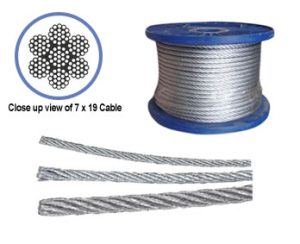
Control cables are used extensively in the aerospace manufacturing industry. Many airplanes, as well as other types of aircraft, feature them. Also known as flight control cables, they are linkage systems that control the parts to which they are connected. To learn more about aircraft control cables and how they work, keep reading.
Aircraft Control Cables Defined
Aircraft control cables are metal cables that connect to parts. As their name suggests, they are used for control purposes. Aircraft control cables control the parts to which they connect.
Some aircraft control cables connect to the landing gear. Airplanes feature landing gear consisting of wheels that allow pilots to safely land on the runway. Aircraft control cables connect to the landing gear. They allow pilots to lower or raise the landing gear.
In addition to the landing gear, aircraft control cables are often connected to rudders, engine systems and various emergency systems. Regardless, aircraft control cables are used to control the parts to which they connect. They
Different Types of Aircraft Control Cables
There are different types of aircraft control cables. While they are all typically made of metal, you can find them in different types of metal.
Stainless steel and galvanized steel are some of the most common metals in which aircraft control cables are made. Stainless steel is an iron alloy with a chromium content of 11% or higher. Galvanized steel is an iron alloy with a thin outer layer of zinc. Stainless steel and galvanized steel are both strong, durable metals, and they both offer a high level of protection against corrosion. These properties make them popular choices for aircraft control cables.
Aircraft control cables are available in different sizes. When shopping for them, you may notice that aircraft control cables feature two numbers for their respective size. The first number indicates the number of strands used in an aircraft control cable. The second number indicates the number of smaller wires in each strand.
A 7×19 aircraft control cable, for instance, has seven strands and 19 wires. You can see an example of a 7×19 aircraft control cable in the photo above. It’s not a single and solid piece of metal. Like all aircraft control cables, it consists of multiple pieces of metal that are braided and twisted together. To determine how many strands and wires an aircraft control cable features, you should refer to its size.
Aircraft control cables



